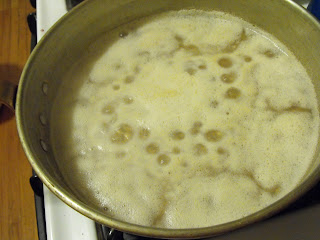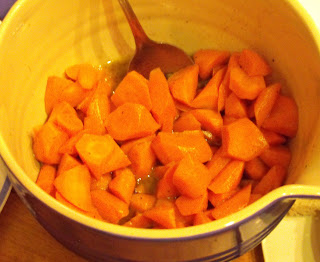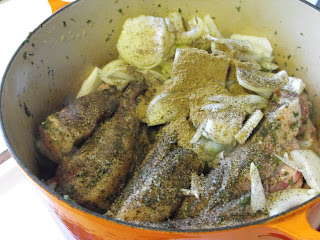We go back to Cato for this recipe. The suovitaurilia was a very important sacrifice for the Romans consisting of a pig, a ram, and a bull (sus, ovis, and taurus) that was a purification ritual done for major religious events at Rome, most famously at the completion of the census every five years. Here is a picture of the relief sculpture of a suovitaurilia in the senate house in the forum at Rome.
Appropriately enough, considering his past experience as censo, Cato, in his book on farming (De Agricultura CXLI), recommends also having a suovitaurilia to purify farmland. Now, when one reads about an ancient sacrifice it appears that some parts are grilled and some parts are boiled, depending on which parts would taste better by what method. So, to imitate this, I simmered some cuts of lamb, beef, and pork in red wine for 8 hours and I grilled some other cuts of the three animals. This recipe cooks alot of food, but I was cooking for alot of people. You should too.
Suovitaurilia
2 lamb shanks
4 pounds beef short ribs
4 pounds pork roast
red wine
olive oil
4 pounds boneless pork chops
4 pounds lamb shoulder chops
4 pounds beef sirloin
salt
1) Heat up some olive oil in a pot and brown the shanks while you cut up the pork roast.
2) Add the short ribs and pork roast to the pot, and add wine to cover.
3) ummm, this is too much for one pot. Put it into two pots!
4) Okay, now simmer away for 8 hours or so. After about 5 hours, I was able to combine it all into one pot. After 8 hours it is all just an amazing mixture of goodness.
5) For the grilled part of the meal, I grilled the chops and sirloin over pretty high heat on a grill pan inside. While the ancients did have grill pans remarkably like our own, if you can grill the meats outdoors over charcoal it will be even better. I used only salt as my seasoning for all this meat, and Cato thinks that is what you should do as well.
There are sacrificial cakes that Cato specifies go with the suovitaurilia, but I will save them for a later post. Celebrate the arrival of spring and eat Suovitaurilia! Cato says that you are supposed to walk the animals around your farm and he specifies prayers to say to father Mars as you do so. Also, make a prayer with wine to Janus and Jupiter. Then, enjoy!













































